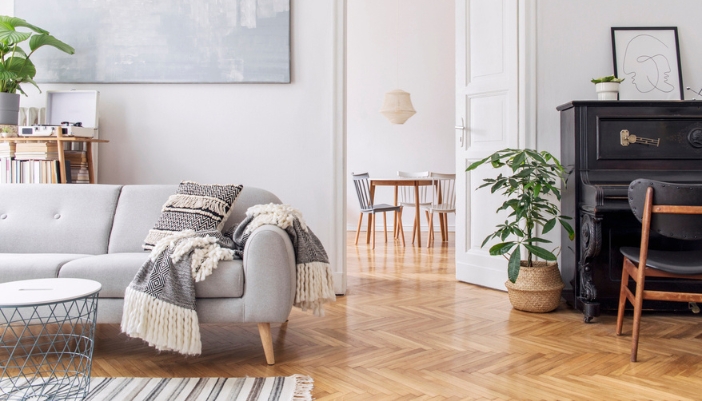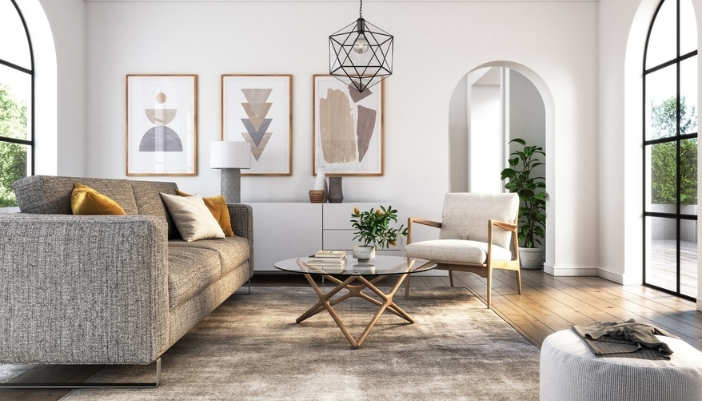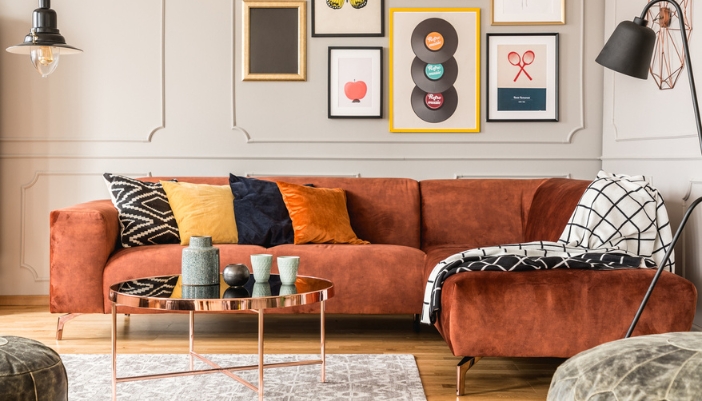Buckle up for a ride through the dynamic and colorful world of furniture design from the swinging 60s to our tech-driven present. This era brought us everything from psychedelic prints to sleek, smart furniture that charges your phone and lights up your world.
It's a story of bold experimentation, minimalist revolutions, and a dash of digital magic, showing us how our homes became reflections of technological advancements and changing social values. Let's unpack the trends that took us from lava lamps to LED lights and see how the past decades continue to influence the design choices we make today.

1960s: Eclecticism and Scandinavian Influence
The 1960s were a dynamic period of eclecticism and the widespread embrace of Scandinavian design principles, characterized by simplicity, minimalism, and functionality. This decade marked a departure from the formality of previous eras, introducing a more relaxed and accessible approach to furniture design.
- Bold Patterns and Colors: The '60s saw an explosion of bold patterns, psychedelic colors, and innovative textures. Furniture pieces often featured vibrant fabrics and were designed to make a statement within the increasingly casual and expressive home interiors.
- Scandinavian Design: Scandinavian furniture, with its clean lines, natural materials, and emphasis on craftsmanship, gained international popularity. This design philosophy prioritized functionality and simplicity, influencing a wide range of furniture styles beyond the Nordic countries.
Did You Know?
Today, the influence of the 60s is evident in modern interiors where vibrant spaces are balanced by the timeless elegance of minimalist, Scandinavian furniture!
1970s: The Bohemian and Earthy Look
The 1970s introduced a significant shift towards a more relaxed, earthy aesthetic in furniture design, characterized by natural materials, earth tones, and a bohemian flair. This era emphasized comfort, warmth, and a connection to the natural world, moving away from the sleek, futuristic designs of the previous decades.
- Natural Materials and Earth Tones: Materials such as wood, rattan, and stone, complemented by a palette browns, greens, oranges, and yellows grew in popularity – reflecting a growing environmental consciousness.
- Bohemian Flair: Macramé, woven textiles, and Moroccan-inspired designs became staples in home decor, adding layers of texture, patterns, and other visual interest to interiors.
Did You Know?
Today, modern design embraces the 1970s influence, prioritizing sustainability, artisanal craftsmanship, and earthy tones in furniture - emphasizing cozy, nature-inspired spaces!

1980s: Postmodernism and Excess
The 1980s marked a bold departure from the minimalist trends of previous decades, embracing postmodernism with its ethos of "more is more." This era in furniture design is characterized by an eclectic mix of styles, a vibrant palette, and a penchant for ornamental and exaggerated forms.
- Eclectic Style and Vibrant Colors: The 1980s introduced a fearless approach to mixing different historical styles, patterns, and colors. Furniture pieces often featured a vibrant mix of neon hues, pastel shades, and graphic patterns, reflecting the decade's exuberant spirit.
- Ornamental and Exaggerated Forms: Postmodern furniture design played with scale and proportion, resulting in pieces that were as much sculptural artworks as functional items. The use of non-traditional materials and ironic references to classical architecture and design motifs became hallmarks of the era.
Did You Know?
Today, modern furniture channels the 1980s with bold, playful designs and diverse materials, celebrating the decade's vibrant spirit and departure from tradition. Inspired designers can infuse spaces with glamour, luxury, and a hint of fun.
1990s: Minimalism and the Tech Influence
The 1990s saw a shift towards minimalism in furniture design, reflecting the decade's broader cultural trends towards simplicity, functionality, and the burgeoning influence of technology.
- Sleek, Functional Designs: Furniture of the 1990s emphasized sleek, streamlined forms with a minimal use of ornamentation. The design was driven by the principle that form should follow function, resulting in pieces that were both practical and aesthetically pleasing.
- Neutral Color Palettes: Furniture often featured neutral colors like beige, white, and gray, which contributed to a calm and uncluttered living environment.
- Influence of Technology: As personal computers became a staple in homes, furniture design adapted to incorporate these new technologies. Desks with built-in cable management and ergonomic office chairs catered to the needs of the tech-savvy consumer.
Did You Know?
The 1990s spurred a shift to minimalism in furniture, seen today in sleek forms and neutral tones, creating serene spaces. This influence persists through minimalist aesthetics and technology integration, shaping contemporary design for modern living.

2000s to Present: A Blend of Past and Future
The early 21st century in furniture design is characterized by a harmonious blend of past influences and forward-looking innovations. This era reflects a melting pot of styles, where traditional elements are reimagined with contemporary twists, and sustainability and technology become increasingly significant.
- Eclectic Styles: The 2000s have seen a resurgence of vintage and retro styles, with mid-century modern, Art Deco, and even 70s bohemian designs making their way back into homes, often updated with modern materials and colors.
- Sustainability and Eco-Friendly Materials: There's been a growing emphasis on sustainability in furniture design, with recycled materials, sustainable wood, and non-toxic finishes becoming more prevalent. This shift reflects a broader societal move towards environmental responsibility.
- Smart Furniture: The integration of technology into furniture design has led to the development of 'smart' furniture, pieces that not only serve a functional purpose but also enhance connectivity and interaction, such as beds with built-in charging stations and sofas with speakers.
Did You Know?
The influence of the 2000s is evident in today’s eclectic designs! It's common to find multiple decades seamlessly integrated into modern spaces, showcasing the distinct impact of the 2000s.
Each decade has left its mark, contributing to a rich mosaic of styles that continue to inspire and influence our spaces. Whether it's the retro warmth of the 70s, the bold statements of the 80s, or the sleek lines of the 90s that catch your eye, there's no denying the lasting impact these eras have on our modern homes. If you’re feeling inspired by a new decade or trend, stop by Urners to give your home’s design a refresh by shopping our diverse furniture selection!
And if you have any questions about which pieces work best with your home, contact our team! We’re always happy to lend a hand!
